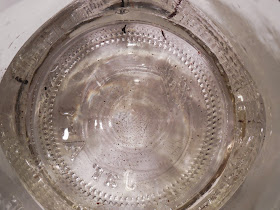 The Google Science Fair
is now taking submissions for
2015. This contest for young scientists, innovators and engineers is
in its 4th year and I continue to be awestruck by the incredible work
being done by the young people who participate. What is the Google
Science Fair? It is an international science and technology contest
for kids ages 13-18. They can participate as an individual or on a
team. Past winners have investigated lowering the cost of biofuels,
cleaning up oil sands waste, mini flying robots, battling world
hunger and much more. Check out some of our great young minds here.
The Google Science Fair
is now taking submissions for
2015. This contest for young scientists, innovators and engineers is
in its 4th year and I continue to be awestruck by the incredible work
being done by the young people who participate. What is the Google
Science Fair? It is an international science and technology contest
for kids ages 13-18. They can participate as an individual or on a
team. Past winners have investigated lowering the cost of biofuels,
cleaning up oil sands waste, mini flying robots, battling world
hunger and much more. Check out some of our great young minds here.
The Google Science Fair is certainly
not the only big science contest for kids. There are many options out
there spanning a wide range of ages. Whether you are interested in
having your students and children participate in a contest or not,
reading the descriptions are a great way to inspire your own
classroom projects and challenges. Children hold so much potential
for creative ideas, it is our job to foster their curiosity!
I was so inspired by one past winner of
the Google Science Fair, Ann Makosinski,
I wrote about her last fall. In addition to the story of her bright
idea for a flashlight that is powered by the palm of your hand, I've
included several science opportunities and resources for young
innovators. Check it out here.
For some ideas for engineering
opportunities at home or in the classroom, check out the resources
listed in my post "Solar Power in Space: Real Life Engineering Challenges". "Get Caught Engineering" is another great resource for
engineering, STEM and innovation activities.
If you are looking for science contests
for kids you might want to visit my Pinterest board "Science Contests for Kids"
or my blog page "Contests, Grants and Freebies" for an
up-to-date listing of science contests and other interesting projects
that benefit schools, teachers and students.
The following websites also maintain
extensive lists of contest opportunities for kids:
Let's get our creative young innovators and scientists inspired! Do you have a favorite science project or competition? Comment below or e-mail me at: shareitscience@gmail.com



























